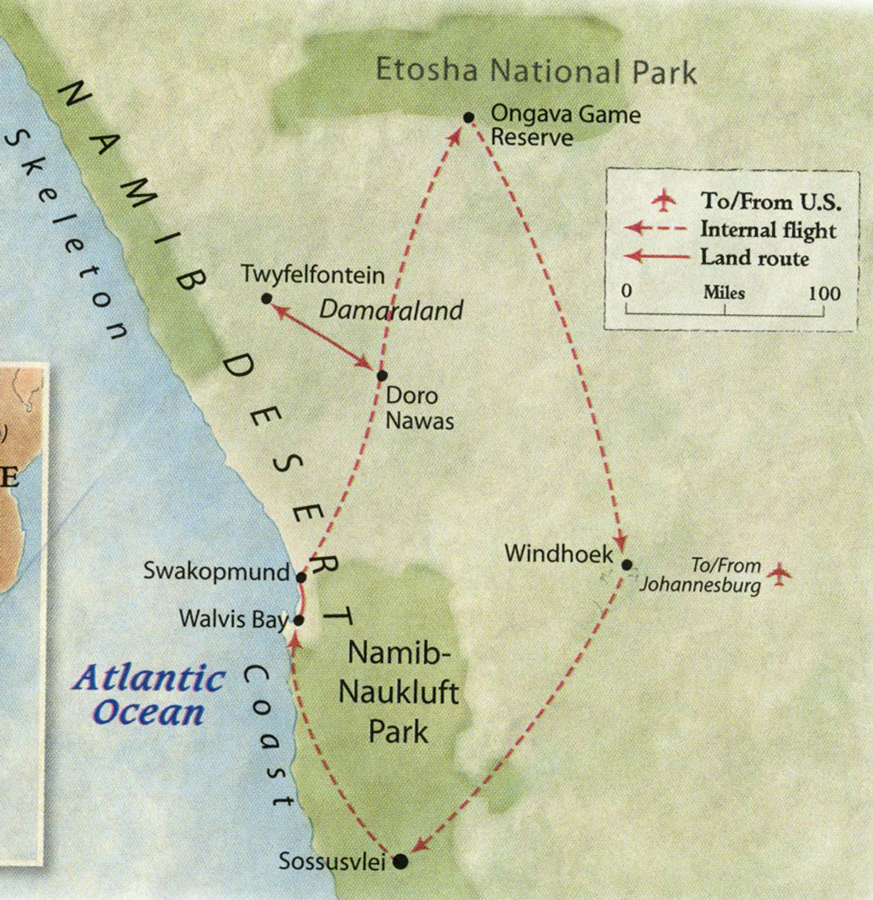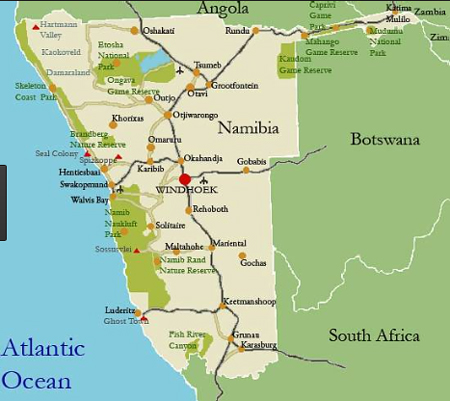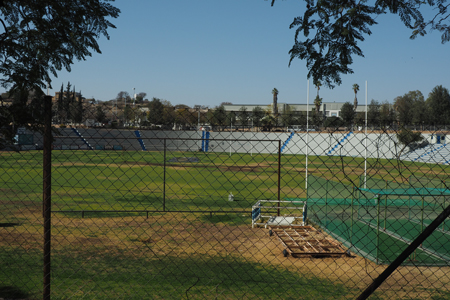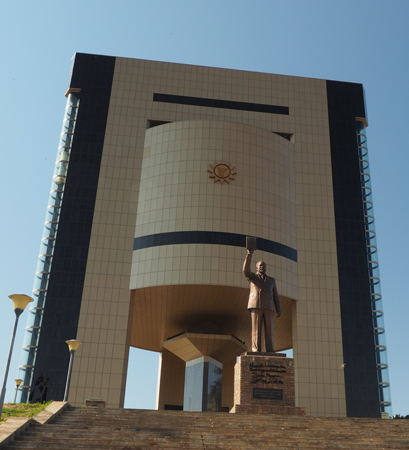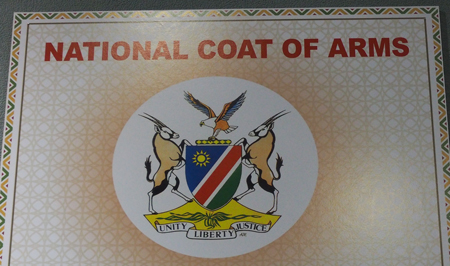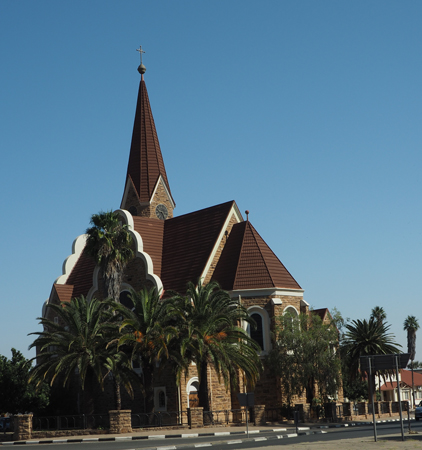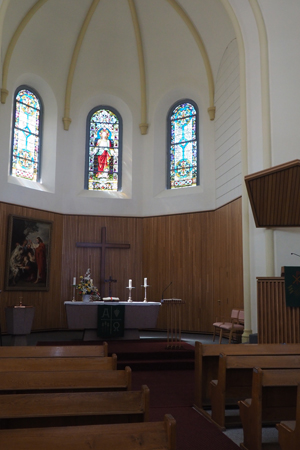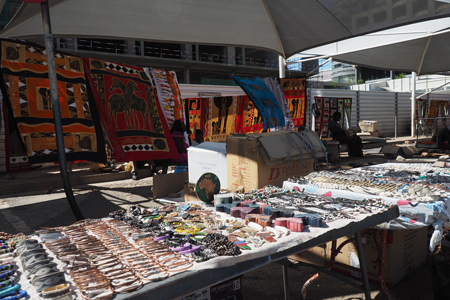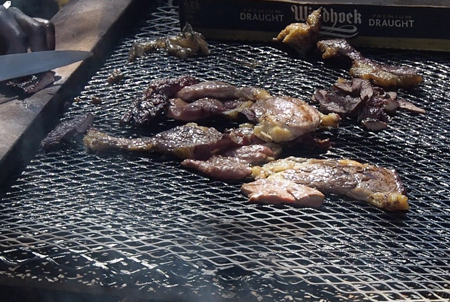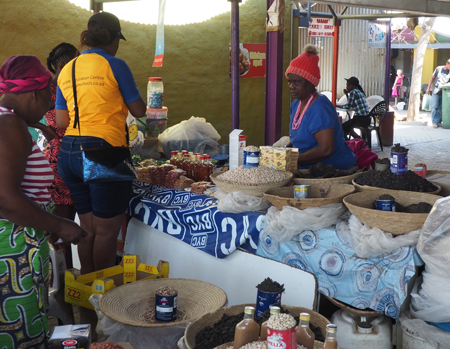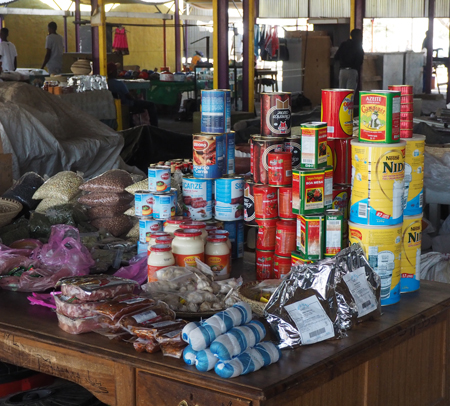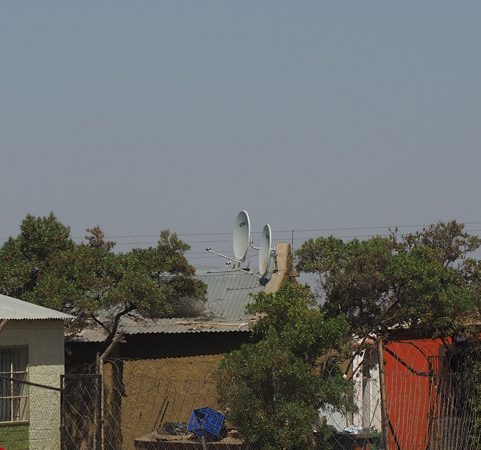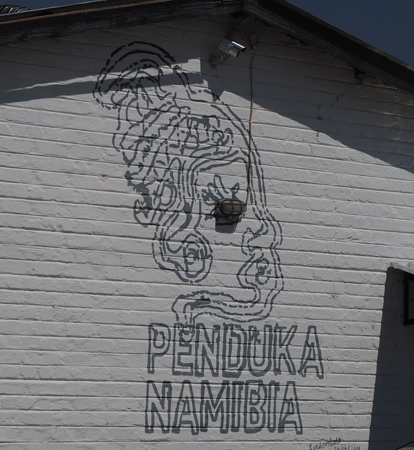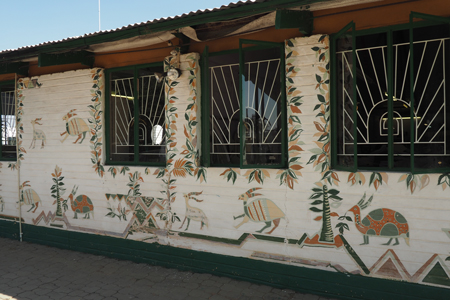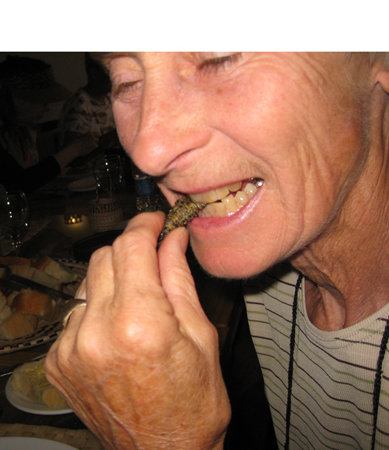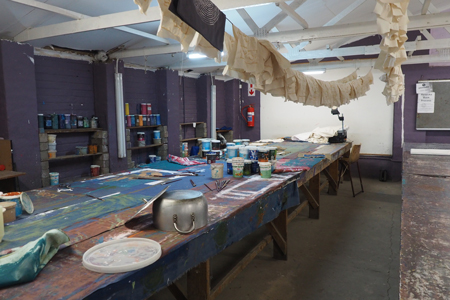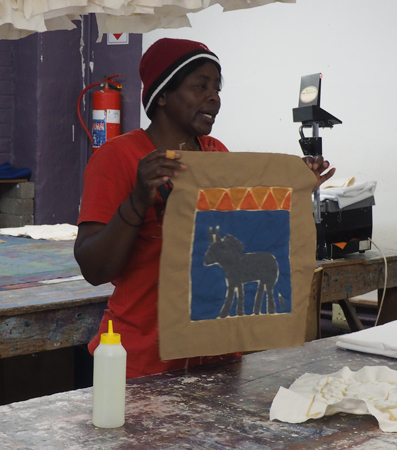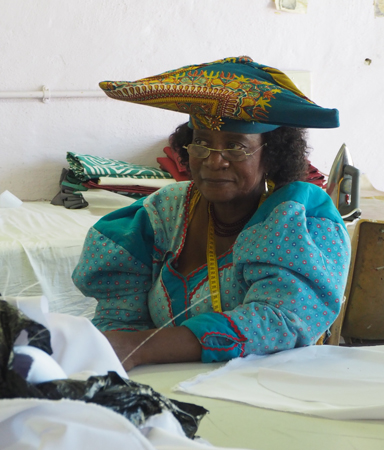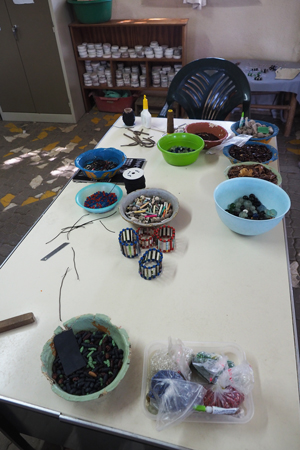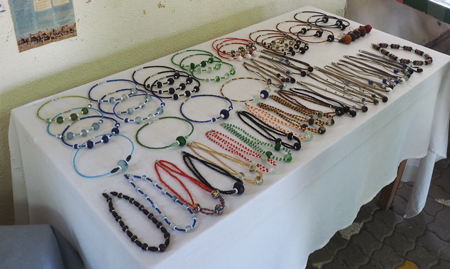OAT: Namibia & the Skeleton Coast: Africa’s Last Wilderness
August 22 – September 6, 2017
The second tour of our African adventure was to Namibia, a country that is mostly desert. Some places in Namibia have not had rain for 5 years! The focus of the first part of the trip was on the desert, the coast, and the different cultural groups found in the region. The last week of the tour was spent in the northern part of the country where we were able to see the animals in Damaraland and Etosha National Park.
| August 23 | Windhoek Tour; Oshetu Community Market; Penduka Craft Center |
| August 24 | Fly to Kulala |
| August 25 | Namib Desert Dunes; Dune 45; Deadvlei; Sunset |
| August 26 | Kulala; Sesriem Canyon |
| August 27 | Fly to Walvis Bay |
| August 28 | |
| August 29 | Walvis Bay Boating; Skeleton Coast |
| August 30 | Fly to Damaraland; Desert Elephants |
| August 31 | Petroglyphs; Burnt Mountain; Organ Pipes; Damara Living Museum |
| September 1 | Petrified Forest; Goat Gift; Doro Nawas |
| September 2 | |
| September 3 | Lions Hunting; Etosha National Park |
| September 4 | Ongava Game Reserve; Camp Waterhole |
| September 4-5 | Fly home |
|
Namibia and the Skeleton Coast
|
|
Tues., 8/22/2017 - Johannesburg to Windhoek, Namibia
We met Reynard (an OAT rep) again in the hotel lobby at 9:45 and he took our group of 11 to the airport and helped us check in.
The British Airways flight to Windhoek was two-hours across very dry, barren land. Our hotel, the Thule, is up on a hill overlooking the city. It is very nice and we have a nice large room.
We met at 5:30 for introductions and briefing and then went by bus to NICE, Namibian Institute of Culinary Education and had a very nice meal with oryx and eland steaks.
Wed., 8/23/2017 – Windhoek
Our new OAT tour director is Lloyd. He gave us a lesson on the history of Namibia as we sat on the bus this morning.
We got off the bus at the “old” parliament building built in 1912 by Germany.
We walked to the Namibian Museum built by the South Koreans and opened in 1990. It is a picture museum of the struggle for the independence that was granted in 1990.
Next door is the old fort used by the Germans in controlling the Herero and Nama people in the 1800’s. In front of it is a peace monument entitled “Their Blood Waters our Freedom.”
We crossed the street and entered the German Lutheran Church, Christuskirche, built in 1907. Kaiser Wilhelm II paid for the stained glass windows.
Flag of Namibia |
Varieties of Namibian license plates
|
School kids on the steps of the original parliament building
|
Sports fields - Cricket |
Statue of Sam Nujoma, Namibia's first president
|
The coat of arms is based on the flag of Namibia, and is rooted in the sand of the Namib Desert. Rooted in the sand is the unique plant Welwitschia mirabilis, one of the world's oldest plants.
|
|
|
German Lutheran Church
|
German Lutheran Church |
German Lutheran Church
|
Windhoek - craft market |
|
The bus then took us to Katutura to the Oshetu community market. Lloyd showed us bird’s plum, dried spinach, dried caterpillars, among other local things. We sampled local bread and donuts and roasted meats. The meat market is being refurbished, which it badly needed, but the spice and grain areas were relatively clean and neat.
|
|
|
Oshetu Community Market
|
Oshetu Community Market
|
Oshetu Community Market - free samples |
Oshetu Community Market - mushrooms
|
Oshetu Community Market |
Oshetu Community Market - dried caterpillars |
Oshetu Community Market
|
|
Note the angle of the satellite dishes
|
Next we drove to the dam and reservoir where a woman from the Netherlands started Penduka, a women’s center, in 1992. Women are trained in pottery, sewing, embroidery, glass bead making, and hospitality so they can make a living. We toured the workrooms and visited the shops. We ate lunch there and Gale sampled the roasted caterpillars. She ate two and they were okay. The women then danced for us. It was like stomping to a bongo drumbeat. |
|
|
Penduka Craft Center |
Caterpillar for lunch |
Caterpillar for lunch
|
Penduka Craft Center - Batique making |
Penduka Craft Center - Batique
|
Penduka Craft Center - Herero woman sewing
|
Penduka Craft Center |
Penduka Craft Center - Necklaces
|
|
| Return to Top | Return to Itinerary | Return to Trips page to view other trips | Return to Dreamcatcher Home Page |
